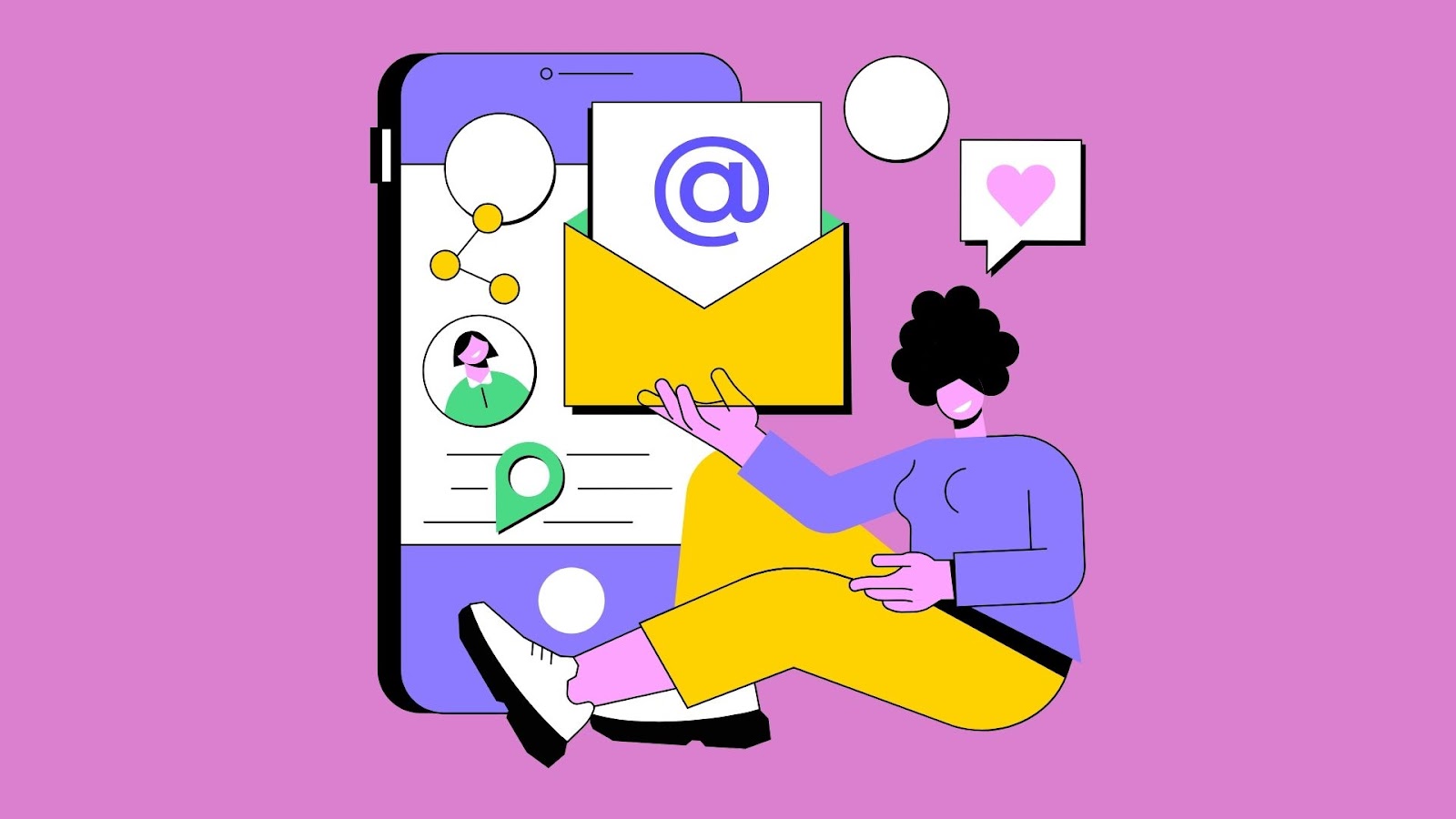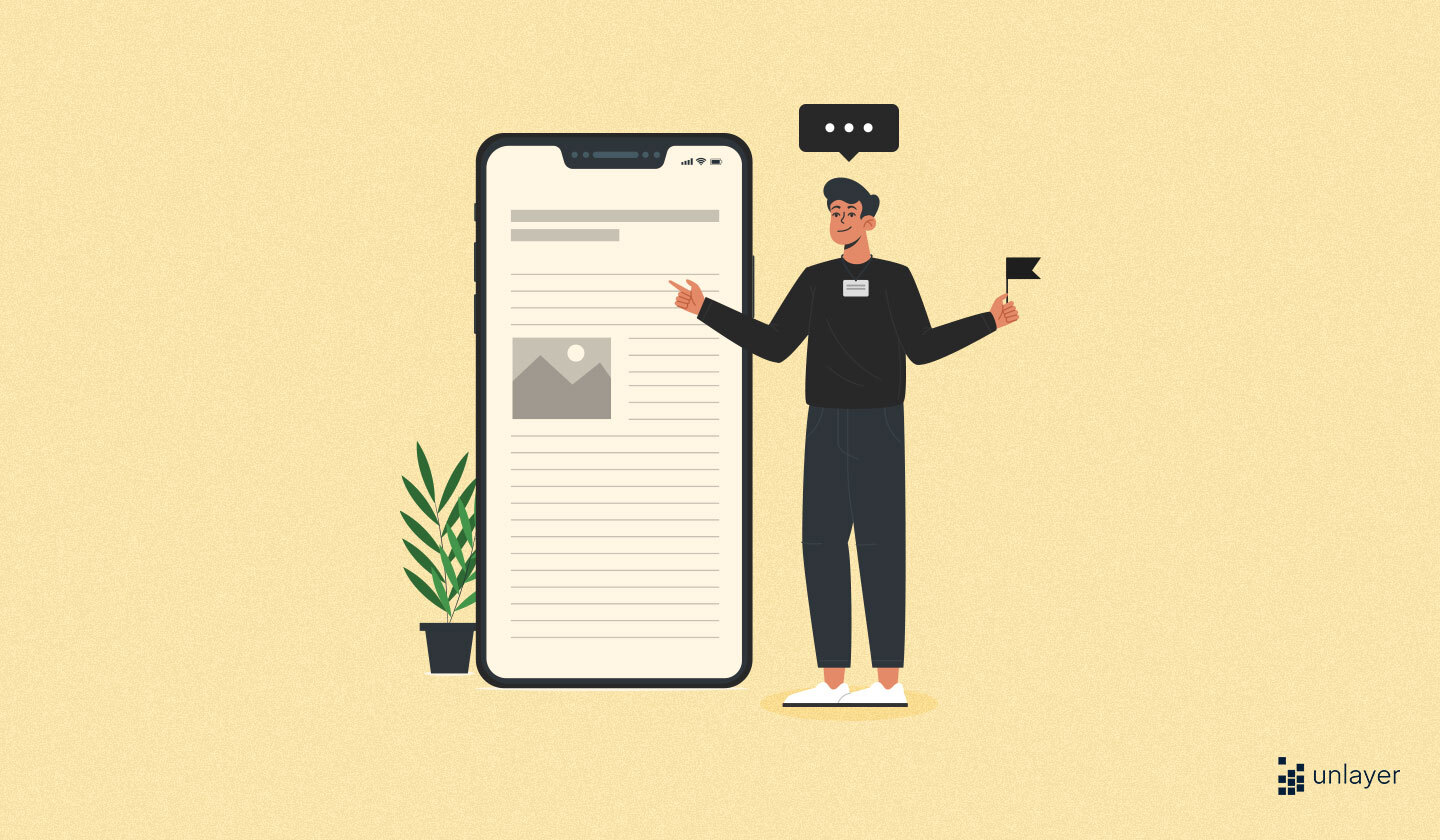Would you ever go to someone’s house uninvited? Well, sure you can. But you can only imagine how “welcome” you’d be.
The same is the case with email marketing. You can’t email your ideal customer if you haven’t gotten their consent to be emailed. If you do, you’ll face the wrath of your prospects and regulators. Don’t want to scare you, but you can be fined up to $46,517. Ouch.
Permission-based email marketing should be a norm for any company using this channel. If you’re new to this concept or want to brush up on your skills, then this article is for you. Let’s get started.
What is Permission-Based Email Marketing?
Permission-based email marketing is when people choose to receive marketing messages from you via email. In other words, they give you their permission to be emailed.
However, not all permissions are the same.
Express Vs. Implied Permission: Which Wins?

If you truly want to be in your subscribers’ good books, you should only contact them when you have their express permission.
Express permission is when people categorically consent to receive marketing emails from you. On the other hand, implied impression is when people give you their email address in exchange for something, say an ebook. In such a situation, they’re interested in that promised offer but not explicitly in being contacted for marketing emails.
Express permission is a definite yes. While implied permission is a maybe, or even a no.
What Happens When You Send Emails Without Permission?
Does permission-based email marketing sound like too much work? What if you just buy an email list from this credible source? Surely, if the email IDs are legitimate, you’ll be saved from any unfavorable situations, right?
Nope. Get these thoughts out of your mind. Sending emails without consent is an email marketing sin.
When you send emails without permission, you:
Lead to annoyed prospects
One of the biggest criticisms of marketing is that it feels forced and unwelcomed. If you participate in the latter, you’ll cause a bunch of people to become frustrated with you. This is problematic since some might be potential customers, but your unwanted moves have resulted in a loss of business.
Encourage negative word of mouth
What happens when you piss off your leads? You encourage them to talk.
In the era of social media, your prospects are one tweet/post/story away from bad-naming your dubious practices. Remember, you don’t want to do anything that’ll get you canceled.
Break the law
Cold emailing might be unethical in America, but it is illegal in GDPR-regulated countries. These include all the countries that fall in the European Union, so you better take your prospect’s permission.
Violate the policies of your email marketing software
If you’re executing email campaigns, chances are you’re using an email marketing software. One of their selling points is a high deliverability rate, ensuring your emails land in your audience’s inbox, not spam.
How is that relevant? When you send emails, you send them through their IP address. So if you’re sending emails to bogus addresses, you’re harming their IP and deliverability score. This is why most email marketing software include in their terms that their clients must make use of permission-based email marketing.
How to Permission-Based Email Marketing? 3 Easy Steps

Alright, on to the main part. Permission-based email marketing isn’t as tough as it seems. Just follow the below 3 easy steps, and you’re golden.
1. Decide on an attractive lead magnet
A lead magnet is essentially anything that’ll attract your leads to the extent that they’ll share their email address with you. It can be a free downloadable checklist, a limited-time discount, a well-researched whitepaper; you name it.
There are a couple of things to remember when creating lead magnets.
It should be attractive enough that your audience can’t resist it.
It should be relevant to your audience - no $5 off on Taco Bell for your SaaS customers.
2. Collect email addresses
You’ve got the lead magnet, now you need a way to promote it.
If you’re going to feature your lead magnet on your website, you’ll do it through an opt-in form. The latter collect sign-ups in exchange for that valuable offer and makes it easy to highlight any terms and conditions.
You can also collect your potential subscribers' email addresses through;
Social media
Paid ads
Conferences/Webinars
Checkout process
Just make sure you properly mention the purpose of why you’re collecting email addresses along with any details, like frequency of contact and content of the emails.
3. Send confirmation emails
To truly make a valuable email list, you should make use of double opt-ins.
As the name suggests, you take your prospect’s permission twice to contact them via email. First, you receive their email through a source, say opt-in forms and then send them a confirmation email to verify their willingness.
You might think this is unnecessary, but trust me, it can make all the difference. It helps you find those subscribers who truly are interested in hearing from you, which only means they’ll engage with your emails in the future.
Double opt-ins witness 114% increase in click-throughs than single opt-ins, so you know it’s worth giving a shot.
If you’re looking for an easy and quick way to design confirmation emails, then use Unlayer’s predesigned confirmation email templates. They are completely customizable and white-labeled, and most are free to use.
Permission-Based Email Marketing: Best Practices to Remember
Told you, performing permission-based email marketing wasn’t a tough nut to crack. But if you truly want to elevate the success of your campaigns, follow the below best practices.
Be 100% transparent
It’s always better to give the complete details when asking for permission than apologize for spamming later.
When asking for your prospects’ consent, provide them with all the information to help them make a more informed decision. I suggest you mention how frequently you’ll email them and the type of content that’ll be shared with them.
Frequency of emails
Let your leads know the number of emails you will be sending them each month. Remember, we’re talking about marketing emails here and not transactional emails - the number of the latter ultimately depends on your customer’s purchase behavior.
You can step it up a notch by mentioning the different intervals that your customers would want to hear from you, say weekly, bi-weekly or monthly. You can do this through checkboxes in your opt-in forms.
Type of content in emails
Tell them exactly the type of content you’ll be sending in your emails. Now I don’t mean you bombard them with heaps of information but let them know if you’ll be sending them promotional emails, blog roundups, or newsletters.
Encourage short-term unsubscription

It’s hard to see a subscriber go. But you can play around with this smartly.
Did you know that 69% of people unsubscribe because they receive too many emails? Chances are, some of your subscribers might be interested in one type of campaign over the other. And when you send multiple emails of that campaign, it might tick them off to the extent that they’ll unsubscribe or, worse, report you as spam.
To avoid this from happening to you, let people temporarily unsubscribe from a certain campaign, say Mother’s Day emails or Black Friday promotions. This will not harm your reputation and will keep your subscribers engaged.
Consider sending waitlists
Just like you give an option to opt out of receiving your emails, you can give your prospects the option to opt in. This means you can gain their permission to join a waitlist where they’ll receive emails that others who aren’t part of the list will not.
This added layer of permission ensures you’re sending out emails to the right group of people who genuinely want to know more about a certain campaign.
Re-engage cold subscribers or scrub your list
Getting your leads’ permission is one part, but maintaining it is another.
If you haven’t reached out to a prospect in 6 months, they fall in the cold email category. You need to ask for their permission again before contacting them. You can do this through the following ways:
Re-engagement campaign: Send a re-engagement email to reintroduce yourself, your values, and products/services.
List scrubbing: Send an email in which you ask your subscribers to verify their permission or become unsubscribed. If they don’t take any action after a series of emails and a set time period, you would have to remove them from your email list.
Don’t try to be cheeky
No cheeky business is allowed when emailing your potential and actual customers. The truth is you can’t outsmart your leads, so it’s better to be 100% honest.
Don’t write in a tiny font about sending marketing emails in an opt-in form. You should also make the opt-out process easy and quick. No solve this puzzle to unsubscribe or answer 20 questions before you can opt out.
Look for ways to boost your opt-in rates
Always be on the lookout for ways to increase sign-ups. Remember, your email’s list size is a vanity metric. So you should focus on increasing quality opt-ins.
You can do this by:
Mentioning all details in your opt-in form
Ensure your lead magnet is valuable, interesting, and relevant
Diversify sign-ups through multiple marketing channels
Perform a routine email list audit
Look for patterns of who subscribe to your emails the most and reach them through paid ads
Takeaways
Easy, peasy, lemon squeezy - that’s how stress-free your permission-based email marketing efforts should be after reading this quick guide. Remember, folks, your prospects’ permission is the most valuable asset you can have.





